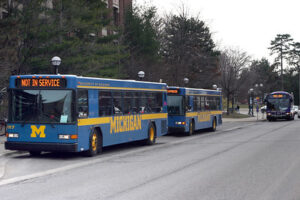High demand in the labor market will increase pressure on higher education institutions that are hoping to increase their fall enrollment. Unemployment remained under 4% again in June, creating the longest consecutive period of near-peak employment in the US since the 1960s. According to the BLS, nearly 10 million jobs were unfilled in May. That number declined by nearly one-half million jobs from April, but workers still have ample opportunity to find new work if necessary or desirable.
Also working against higher education enrollment is inflation and real wage increases. Last week, the Bureau of Labor Statistics issued new data on inflation. The Inflation rate fell to 3.0%, the lowest increase in monthly inflation since March 2021. That’s great news for consumers, but real earnings for US workers increased by just 0.2% for all employees. For hourly workers, real earnings increased by 0.4% and real average weekly earnings increased by 0.5%. That means American workers are still falling behind inflation.
One way to predict enrollment trends is by examining FAFSA applications between school years. In 2022-23 in Quarter 2, the Department of Education processed 1,006 applications for federal financial aid for dependent students enrolled at or planning to attend Washtenaw Community College. ED also processed 1,461 applications for independent students. For the same period in the 2023-24 application cycle, the Department of Education processed 836 applications for dependent students and 1,377 applications for aid by independent students. Overall, by this point in the application cycle in 2022-23, ED processed 4,782 applications for financial aid. For the current aid cycle, ED has processed 4,560 applications for aid. That’s a year-over-year decline of 4.64%.
Independent student enrollment may decline again this fall
Looking only at the number of aid applications from independent students, the number of financial aid applications processed in Q2 2023 decreased by 5.75% from Q2 2022. (I’m looking at Q2 data because that is the most recent available data for the current FAFSA cycle.) Year over year at the Q2 mark, total financial aid applications for independent students were down by nearly 1.6% in 2023. Applications for financial aid and applications to attend are two different things, but the decline in federal financial aid applications for WCC seems to indicate that there is a declining interest in programs like Michigan Reconnect, which are specifically designed to increase enrollment among adult students over the age of 25.
Michigan Reconnect has increased enrollment at a number of Michigan’s community colleges, but for some reason, WCC has not seen the same benefit from the program. That doesn’t mean there are no Michigan Reconnect students enrolling at WCC; rather, the number of students the program has attracted has not been high enough to offset declines in enrollment by other demographic groups.
The value proposition of a WCC degree comes into play here. If students could complete a program with the reasonable assurance that they could increase their earnings significantly, WCC’s classrooms would be full.
Food for thought.
Photo Credit: East Georgia State University , via Flickr


























